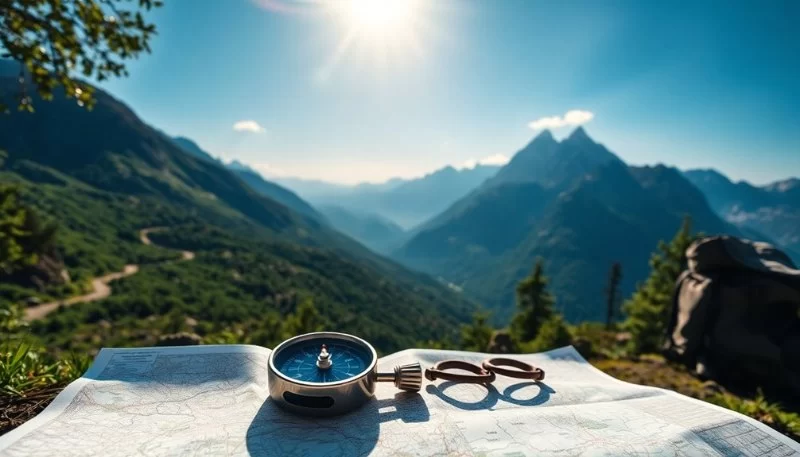- 1 - Why Survival Navigation Matters in the Wilderness
- 2 - Understanding Maps and Compasses
- 3 - Using Natural Navigation Techniques
- 4 - Navigating in Challenging Conditions
- 5 - Practicing Navigation Skills Before You Need Them
- 6 - Essential Navigation Tools for Outdoor Survival
1 - Why Survival Navigation Matters in the Wilderness
Understanding the principles of survival navigation is more than just a useful skill—it can be the difference between a safe return and a dangerous situation. Every year, rescue teams respond to countless calls from hikers and campers who became disoriented in remote areas. Navigation errors often occur due to overconfidence, lack of preparation, or sudden weather changes. Being able to orient yourself without relying solely on GPS can help you maintain safety when technology fails. Guests at Pine Cliff Resort often share stories of hikes that took unexpected turns, where their basic navigation skills helped them return before nightfall.
2 - Understanding Maps and Compasses
One of the fundamental principles of survival navigation is learning how to read a topographic map and use a compass. Maps provide critical details like elevation changes, water sources, and landmarks, while a compass ensures you maintain the correct heading. A good survival navigator knows how to orient the map with the compass, interpret contour lines, and estimate travel time. Even if you own a GPS device, these analog tools remain invaluable when batteries die or signals drop. A seasoned backpacker once recalled navigating through dense fog in the Sierra Nevada by trusting nothing but a map and compass—and arriving exactly where planned.
3 - Using Natural Navigation Techniques
Natural navigation involves using the sun, stars, vegetation, and terrain features to determine direction. For instance, moss may grow thicker on the north side of trees in some regions, and the position of the sun can help you estimate time and cardinal points. At night, constellations like the Big Dipper can guide you to the North Star. This method is particularly useful when traditional tools are unavailable. A hiker at Pine Cliff Resort once lost his compass during a river crossing but successfully navigated back by recognizing the mountain ridge line from earlier in the day.
4 - Navigating in Challenging Conditions
Harsh environments—dense forests, deserts, snow-covered landscapes—can distort landmarks and make navigation harder. In snowy terrain, trails may be completely obscured, requiring you to rely heavily on compass bearings and pacing. In deserts, heat distortion can mislead your vision, making distant objects seem closer or farther than they are. Survival navigation in these conditions demands constant awareness, deliberate planning, and frequent checks to ensure you’re staying on course. This is why training under varied conditions is essential for building resilience and confidence.
5 - Practicing Navigation Skills Before You Need Them
Navigation is not a skill you can master by reading alone—it requires consistent practice. Weekend trips to places like Pine Cliff Resort offer the perfect opportunity to test your skills in a controlled but natural environment. Practice triangulating your position using landmarks, setting and following a compass bearing, and estimating distances traveled. The more familiar you become with these techniques, the more instinctive they will feel in an emergency. In fact, many survival experts recommend “micro-navigation drills” where you deliberately get slightly off-trail and then find your way back using only a map and compass.
6 - Essential Navigation Tools for Outdoor Survival
While knowledge is the most critical survival asset, the right gear can make navigation significantly easier. A durable compass, a waterproof topographic map, a GPS device, and even signaling tools like a mirror or whistle should be part of every adventurer’s kit. Some multi-purpose watches now include altimeters, barometers, and compasses, providing an extra layer of orientation support. However, these should complement—not replace—traditional tools. Remember that survival navigation is about redundancy; the more navigation methods you know and tools you carry, the safer you’ll be in unfamiliar terrain.
Ultimately, understanding the principles of survival navigation empowers you to travel with confidence, even in the most remote locations. Whether you’re crossing rugged mountains, exploring deep forests, or trekking through open plains, these skills ensure you’re prepared for whatever the wilderness throws your way. And when you combine knowledge with practice at scenic locations like Pine Cliff Resort, you’ll not only improve your navigation abilities but also deepen your connection to the natural world.







